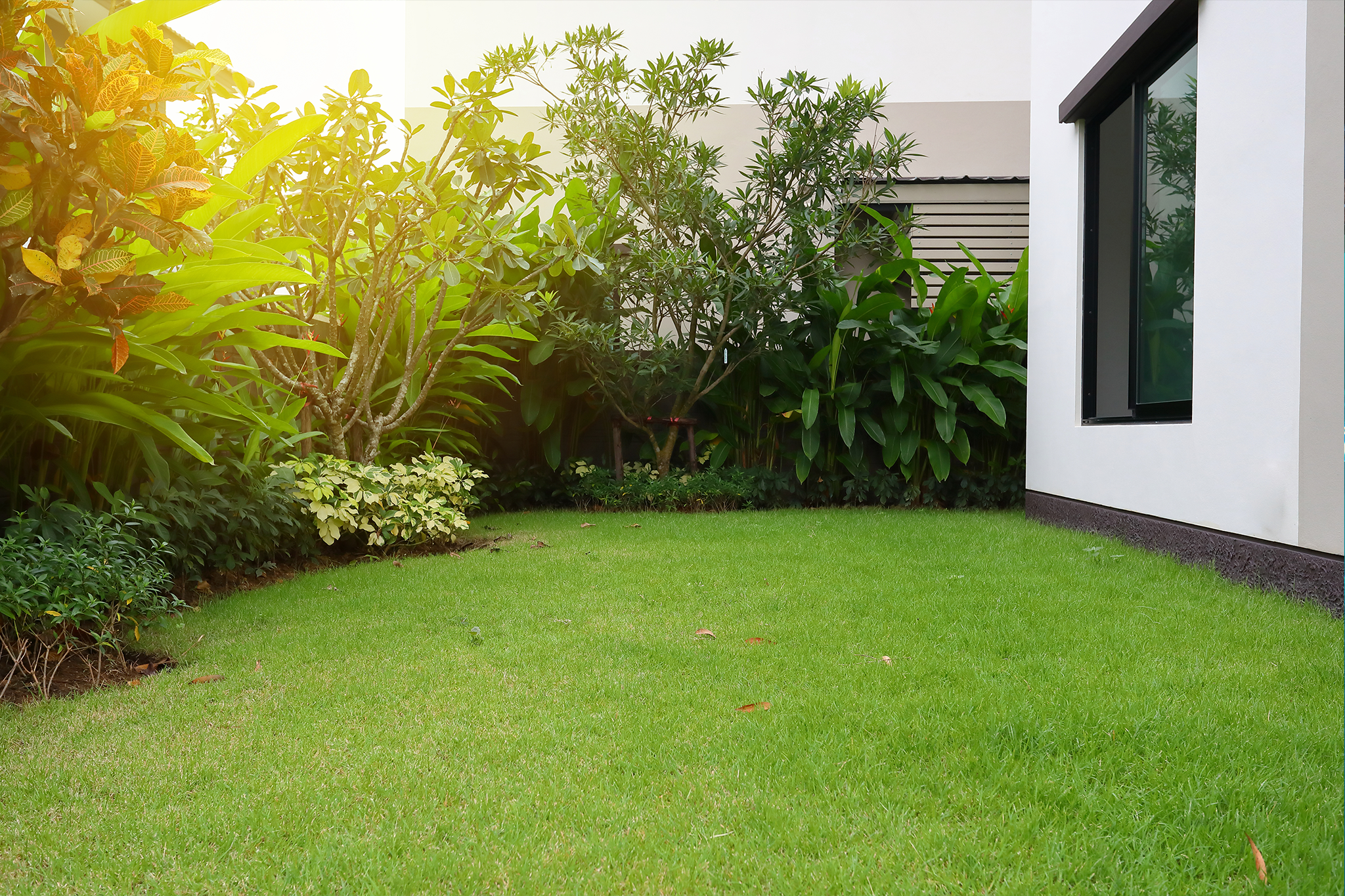

Summer-proof your lawn & garden
We certainly couldn’t finish 2025 without sneaking in another blog on plants, now could we? As they say… give the people what they want! For this blog, we’ve done some research on how to keep your lawns and plants thriving in summer, as they can face real stress from the scorching sun, drying winds, and seemingly never-ending heat. With a few smart moves, your outdoor areas will continue to look their best, requiring minimal maintenance along the way.
Lawn Care
Watering wisely
One of the biggest mistakes people make in summer is watering at the wrong time. Watering during the hottest part of the day leads to rapid evaporation, while watering late at night can promote fungal disease. The sweet spot? Early morning, preferably before 8 a.m., when the soil can absorb water without losing it to heat. Also, skip light daily watering. Instead, deeply soak your lawn once or twice a week. This encourages grass roots to grow deeper, making them more drought resistant.
Mowing for survival
In summer, keep your grass a little longer than usual as it helps shade the soil, reduces evaporation, and gives your turf a better chance to recover from heat stress.
Mulching and aerating
If you’ve got garden beds (or even lawn edges), it’s important to mulch them well. If you’re new to gardening, mulching involves covering the soil around your plants, shrubs, or trees with a layer of – you guessed it – mulch! Mulch is made up of organic material including leaves, grass clippings, bark, and straw, that work together to add nutrients to the soil, insulate the ground, reduce surface temperature, and retain moisture. On lawn areas, aeration (making small holes in the soil) can also help water penetrate deeper, encouraging stronger roots.
Choosing Plants That Actually Love the Heat
Rather than fighting against the weather, lean into it! There are plenty of native and drought-tolerant plants made for hot, dry climates that will thrive in Australian summers. These include:
- Lomandra: This tough, grass-like plant is built for heat. Its strap-like leaves have a waxy coating that helps reduce water loss, and its deep roots tap into cooler soil.
- Westringia (Coastal Rosemary): Westringia’s grey-green, fine leaves reflect sunlight and reduce water loss, allowing the plant to thrive in the sun and in sandy, poor nutrient soils. Similar species with grey, white, or silver leaves work the same way!
- Grevillea: An Aussie native, Grevilleas come in many shapes and sizes and are drought-tolerant once established (i.e. once roots are well-grown).
- Kangaroo Paw (Anigozanthos): Kangaroo paw is a go-to – it loves sun, copes really well with heat, and brings a native flair to your garden!
- Bottlebrush (Callistemon): This shrub/tree produces striking red “brush” flowers and is heat and drought tolerant once established.
- Mandevillea: If you want a climber or potted plant that blooms through summer and handles drought well, Mandevilleas are a perfect choice.
Garden Care
Mulch generously
Like with your lawn, adding a thick layer of mulch to your garden bed will help keep the soil cool, suppress weeds, and reduce water evaporation.
Shade matters
On extremely hot days, provide shade for more vulnerable plants. This could mean using shade cloth, creating temporary covers, or dragging potted plants undercover.
Water deeply, but infrequently
When watering shrubs or native plants, aim for a deep soak rather than frequent shallow watering. Established plants often do better with a long, infrequent drink, as this encourages roots to go deep.
Use the right watering method
Water at the base of plants, not over the leaves. When water sits on the leaves, they can become damaged or burnt by the sun, as the droplets focus sunlight, much like a magnifying glass. Conversely, water that remains on leaves for long periods can encourage fungal diseases.
Recovering from heat stress
If your plants look a bit worse for wear after a heatwave, you can help them bounce back by lightly pruning them. Only remove what’s absolutely dead and use a gentle foliar feed (such as seaweed spray) to support recovery. Foliar feeds are sprayed on leaves rather than mixed into soil, delivering important nutrients to the parts of the plant that need repairing (such as leaves damaged by heat). Foliar feeds can be useful for fast-acting recovery because leaves can absorb nutrients almost immediately, whereas soil-applied fertilisers must travel through the roots, which takes longer.
The seeds for success
It turns out that keeping your lawn and plants thriving through summer isn’t the herculean task most of us would imagine. In fact, most of the work is proactive rather than reactive – done before the temperatures soar! If you choose plants suited to an Aussie climate, lay mulch and establish a watering schedule before the heat hits, and perform light maintenance throughout the season, your lawn and gardens will continue to look their best, all summer long.



